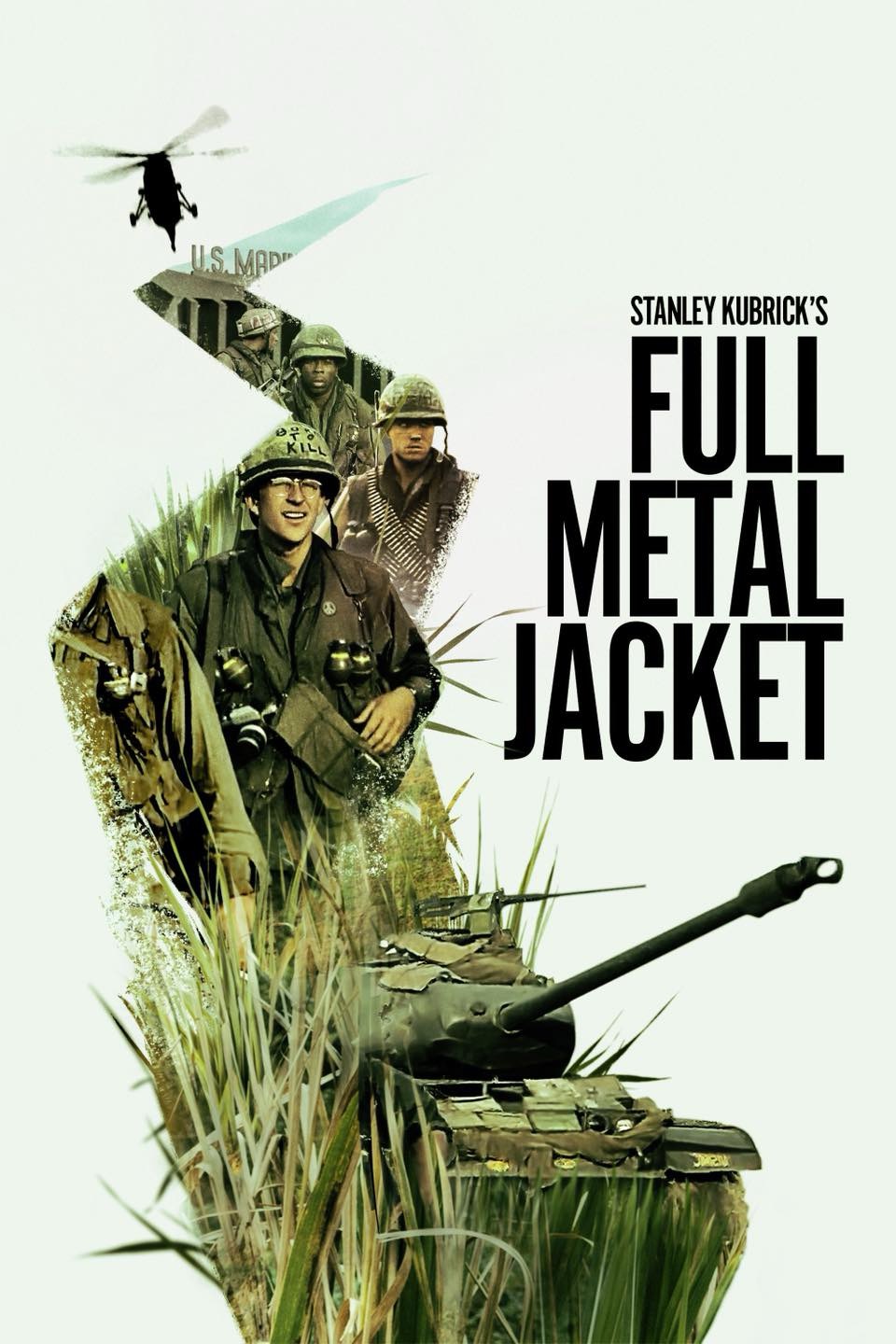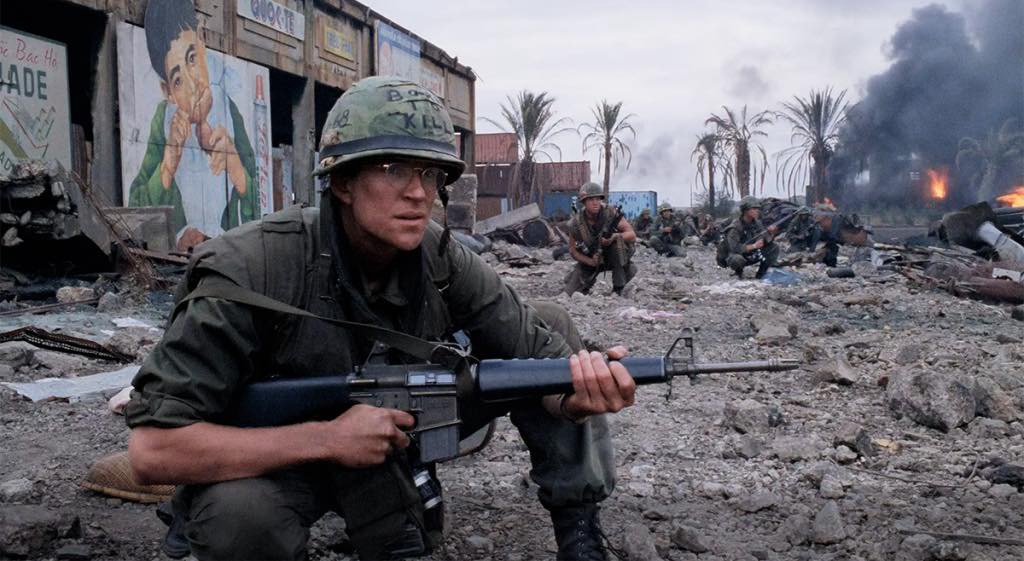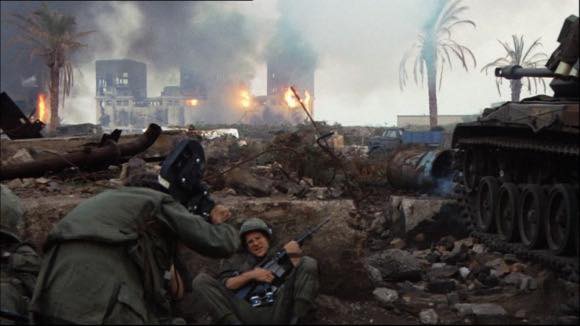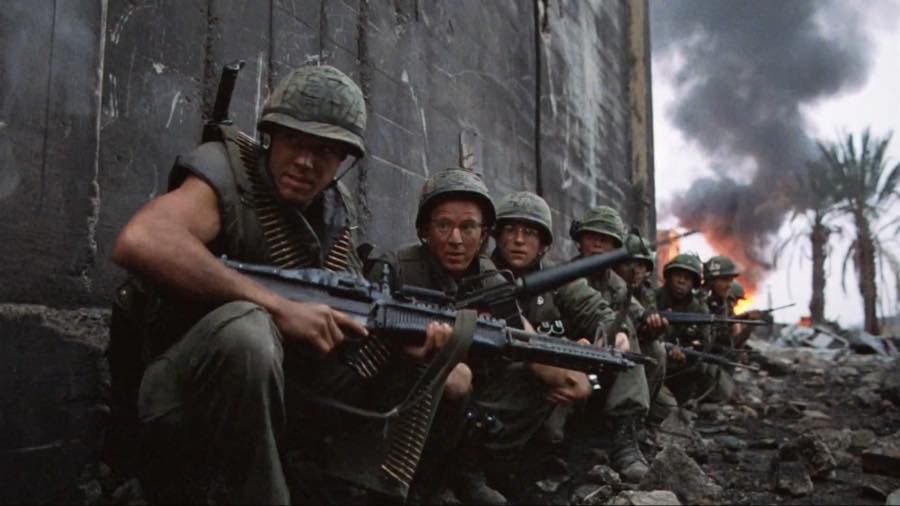Full metal jacket (1987)

Full Metal Jacket (1987), directed by Stanley Kubrick, is a visceral and unsettling war film that takes a unique approach to depicting the Vietnam War. The film is divided into two distinct parts, each reflecting the dehumanizing effects of war on soldiers, both mentally and physically.
Suggested videos for you:
Suggested videos for you:
Suggested videos for you:
Plot and Themes:
The first half of Full Metal Jacket is set in a Marine Corps boot camp, where recruits endure harsh training under the brutal drill instructor, Gunnery Sergeant Hartman (R. Lee Ermey). This portion focuses on the psychological breaking down and rebuilding of the soldiers, particularly through the experiences of the protagonist, Private Joker (Matthew Modine), and the tragic figure, Private Pyle (Vincent D’Onofrio). Hartman’s relentless abuse drives Pyle into a terrifying psychological breakdown, which culminates in a shocking and unforgettable turning point.
The second half of the film shifts to Vietnam, following Joker as a war correspondent. The tone changes to depict the chaos, absurdity, and moral ambiguity of combat. The film contrasts the cold discipline of boot camp with the nihilistic and brutal reality of war. Kubrick explores themes like the loss of individuality, the randomness of violence, and the desensitization to death, reflecting the broader question of what war turns men into.
Performances:
R. Lee Ermey’s portrayal of Sergeant Hartman is iconic, blending dark humor with genuine menace. Much of his dialogue has become part of pop culture, as his character embodies the military machine that strips soldiers of their humanity. Vincent D’Onofrio’s performance as Private Pyle is deeply affecting, capturing a man’s slow descent into madness. Matthew Modine as Joker brings a more subdued but essential performance, embodying a soldier who is increasingly detached and ironic in the face of the horrors around him.
Directions and Cinematography:
Kubrick’s meticulous direction is on full display, with precise framing and a cold, almost clinical visual style that heightens the film’s unsettling tone. The contrast between the rigid, structured world of the boot camp and the chaotic, disordered jungle of Vietnam emphasizes the different faces of dehumanization. Kubrick uses irony and dark humor to critique the war, with moments that feel both absurd and horrific.
Tone and Pacing:
Full Metal Jacket has a sharp tonal shift between its two halves. The first half, with its intense focus on training, is tight and claustrophobic, while the second half becomes more sprawling and fragmented, mirroring the chaos of war. Some viewers find the second half less engaging than the intense first act, but both parts work together to create a holistic critique of the war experience.
Themes and Impact:
One of the central themes of Full Metal Jacket is the dehumanizing effect of war. Soldiers are trained to kill without remorse, and the film asks what the cost is of turning men into instruments of war. Kubrick’s depiction of Vietnam is not one of heroism or glory, but of disillusionment and absurdity. The film’s famous final scene, where soldiers march through a ruined city singing the “Mickey Mouse Club” theme, encapsulates the film’s haunting juxtaposition of innocence lost and violence normalized.
Overall:
Full Metal Jacket is a powerful, disturbing, and darkly ironic war film that stands out for its stark, unflinching portrayal of the military experience. Kubrick’s direction, along with unforgettable performances, makes it one of the most influential war films of its era. While its structure and tonal shifts may divide some viewers, it remains a profound commentary on the destructive effects of war on the human soul.










